While Italian is supposedly an easy language to learn for English speakers, most learners face pronunciation challenges at some point, in part because there are so many Italian loanwords in English whose pronunciation has changed to suit the cadence of the English language.
To speak with confidence and be understood in Italy, it is a good idea to purge your vocabulary of these pronunciation errors, at least when you are speaking in Italian! (When you’re speaking in English, go ahead and use the Anglicised version – otherwise you might be accused of sounding pretentious!)
Here is a selection of Italian words that you have probably mispronounced at some point on your language learning journey. Did the pronunciation of any of these words surprise you? Let us know in the comment section below!
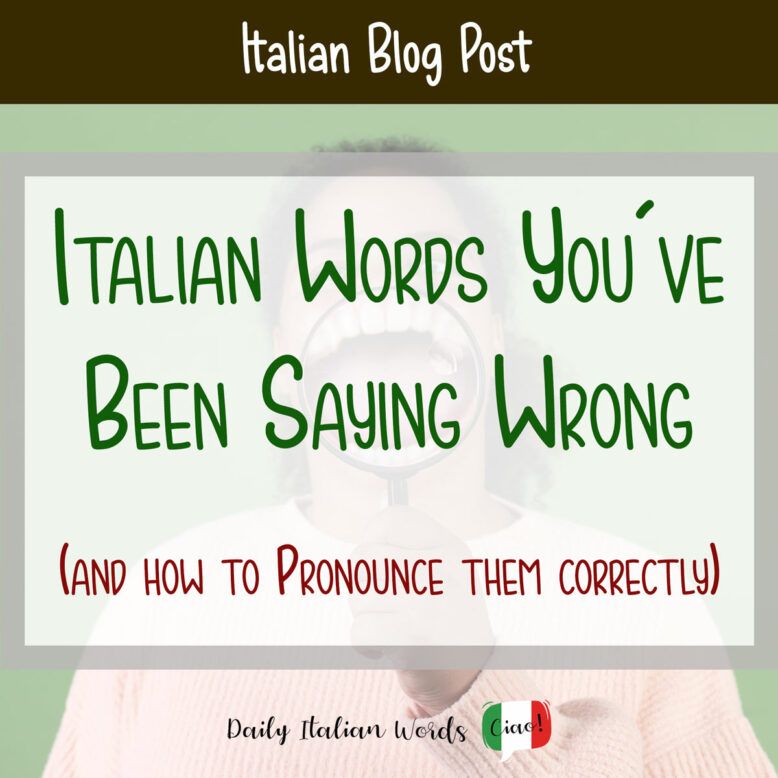
Bruschetta
Bruschetta is a classic example of an Italian word that commonly gets mispronounced by English speakers. In English, we tend to pronounce it “bru-sheh-ta“ with a ‘sh’ sound but in Italian, sche is actually pronounced skeh.
A less serious error is the pronunciation of the double “tt” which English speakers say as either a single “t” or “d” depending on where they come from. In Italian, the double “tt” is clearly enunciated.
Listen to the correct pronunciation of bruschetta below:
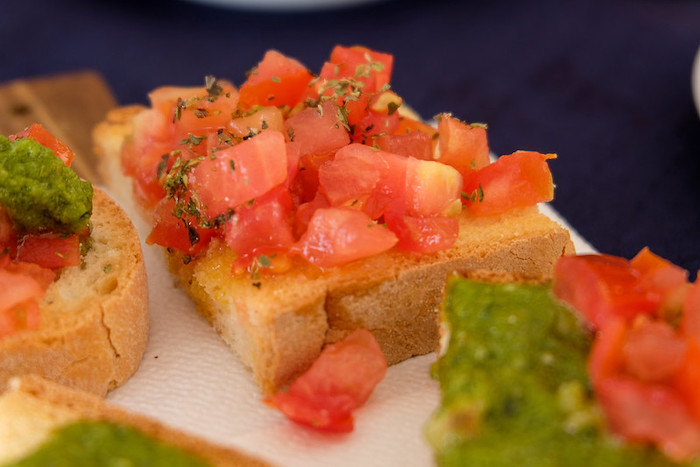
Pistacchio
If bruschetta is our number one offender, pistacchio comes in a very close second!
In English, we use the spelling pistachio and pronounce the ‘ch‘ as a ‘sh‘, whereas in Italian, the ‘cch‘ is pronounced like a hard ‘k‘.
Listen to the correct pronunciation of pistacchio below:

Calzone
Some English speakers pronounce calzone with an ‘ee‘ sound at the end of the word, similar to the ‘ee‘ in “been“, while others leave off the ‘e‘ altogether, pronouncing ‘zone‘ like the English word “zone“. Unfortunately, neither sounds correct to the Italian ear!
The correct way to pronounce calzone in Italian is ‘cal-tso-neh’, as in the audio clip below.
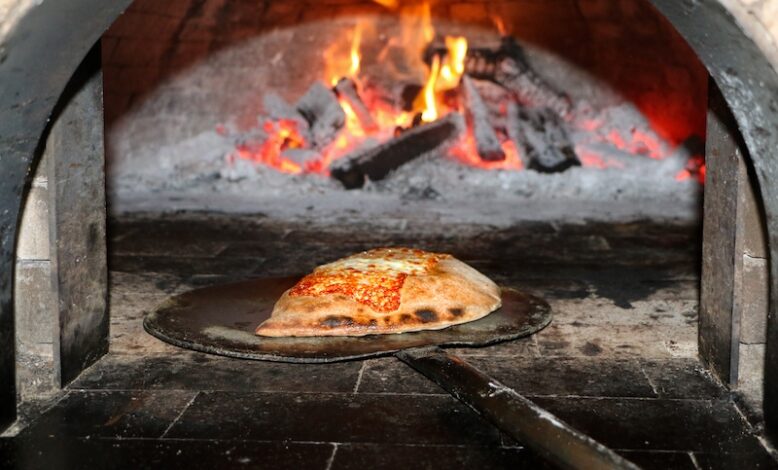
Grazie
A dead giveaway that someone has never studied Italian, or has only just started learning, is their pronunciation of ‘grazie‘, which means ‘thank you‘. Many people fail to pronounce the word-final ‘e‘, transforming the word into something that sounds a bit like ‘grat-zi’.
In Italian, vowels are almost always pronounced individually, so you need to make sure to give equal importance to the ‘i‘ (which sounds a bit like a ‘y’ in this particular word) and ‘e‘. Have a listen to the audio clip below!

Per favore
Here is another expression that beginners and non-speakers of Italian notoriously garble. Because Spanish is so much more prevalent in the United States, many North Americans assume that per favore (which means ‘please‘) is pronounced in the same way as the Spanish ‘por favor‘.
As you can hear from the audio file below, ‘per‘ is pronounced with an ‘e‘ and ‘favore‘ finishes with a clearly pronounced ‘e‘.

Gnocchi
A forgivable error learners make when trying to pronounce gnocchi is assuming that the word-initial gn is pronounced like an ‘n‘, whereas in actual fact, it is a completely different nasal sound. To pronounce gn, start by placing your tongue behind your teeth, as you would to make an ‘n‘, and slowly slide it back to the palate while producing a nasal sound.
Another sound that poses a problem is the ‘o‘ which some learners pronounce like the ‘o’ in the English ‘poke’. It is actually closer to the ‘aw’ in ‘paw’.
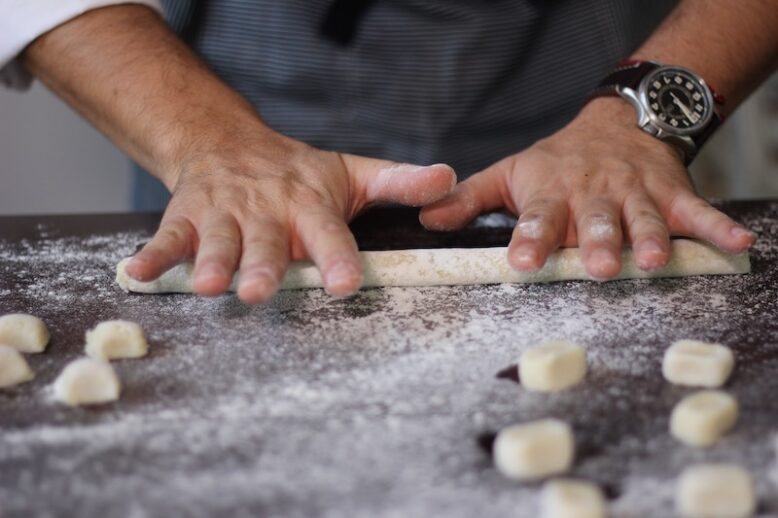
Buongiorno
I can’t count how many times I’ve heard non-Italian speakers pronounce the Italian greeting buongiorno as bon-giorno. I think we can safely assume that the French greeting bonjour, which is pretty well-known among English speakers, is the culprit behind this erroneous pronunciation.

Minestrone
In all fairness, the English pronunciation of the word minestrone isn’t too bad. The important thing to remember is that the word-final ‘e‘ is pronounced like, well, an ‘e‘, not like the ‘ee‘ in ‘been‘.

Capri
Because in English we have the word ‘capri pants‘ (or simply ‘capris‘), it is natural to assume that the island Capri is pronounced in the same way. The truth is that in Italian, the emphasis falls on the first syllable ‘ca‘ rather than the final syllable ‘pri‘. Have a listen to the audio file below!

Espresso
Although many English speakers do pronounce espresso more or less as an Italian would, some people have the tendency to pronounce the ‘s’ as if it were an ‘x’, making it sound more like expresso. This is fine in English, but won’t fly if you’re trying to sound Italian.

Ciabatta
When we say the word ciabatta, we tend to pronounce the double ‘tt‘ as if it were a ‘d‘ and, of course, we fail to produce the double consonant. Also make sure that the cia sounds like the cha in cha-cha-cha, and not chuh as in church.
Listen to the correct pronunciation of ciabatta below:

Risotto
Once again, we have the same double ‘tt‘ issue, with many English speaking people (Americans in particular) forgetting the double consonant and pronouncing as if it were a ‘d‘.
Listen to the correct pronunciation of risotto below:
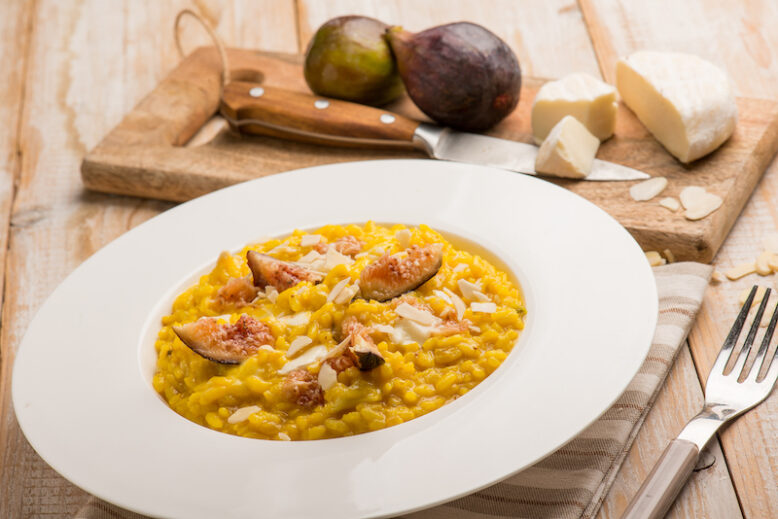
Prosciutto
You guessed it – the “double tt becoming a d issue” raises its ugly head once again! Please don’t forget the double consonant and make sure to enunciate your ts!
Listen to the correct pronunciation of prosciutto below:

Biscotti
In addition to the aforementioned double tt issue, it’s also important to remember that the o in biscotti is pronounced much like the o in the word lost, and not as an open aww sound.
Also worth mentioning is the fact that biscotti is plural, while biscotto is the singular (cookie / biscuit), and biscotto refers to any kind of cookie or biscuit, not just the ones we call biscottis. (These are actually known as cantucci in Italy, but that’s another story!)
Listen to the correct pronunciation of biscotti below:

Versace
This is actually a brand name, but we still felt it was worth mentioning since many English speakers say it incorrectly, pronouncing the word final e as if it were the ‘ee’ in ‘beer.’
Listen to the correct pronunciation of Versace below:

Salame
The issue that presents itself in the word Versace can also be seen in salame, where English speakers transform the e into an ‘ee‘ sound. Also watch out for that first a – it isn’t an ‘uh’ sound but rather a pure ‘ah’!
Listen to the correct pronunciation of salame below:

Linguine
Here we have yet another case of the word-final e turning into an ‘ee‘ sound. To be fair, though, we actually pronounce the rest of the word fairly accurately!
Listen to the correct pronunciation of linguine below:
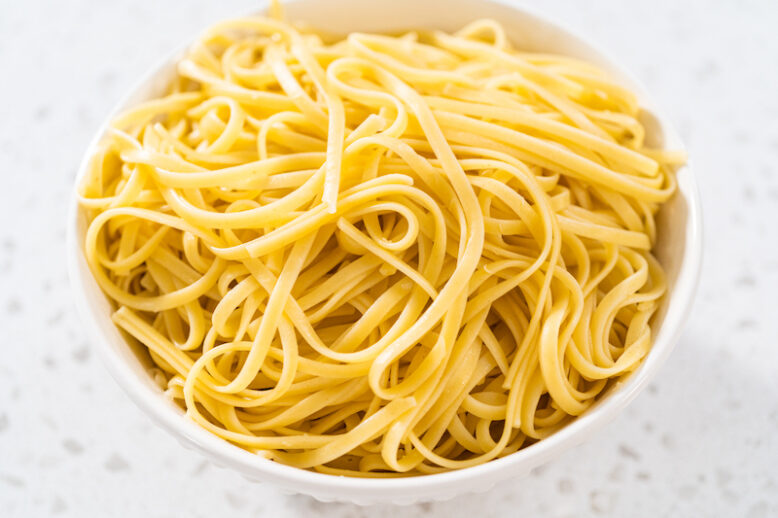
Bolognese
When this word was imported into English, a couple of major pronunciation changes occurred. First, the gn sound went missing, transforming into a simple n in English. Second was the complete disappearance of the word-final e, which in Italian, must be pronounced clearly.
Bolognese, in addition to appearing in the name of the sauce ragù alla bolognese, is also an adjective that refers to people and things that originate from the city of Bologna.
Listen to the correct pronunciation of bolognese below:
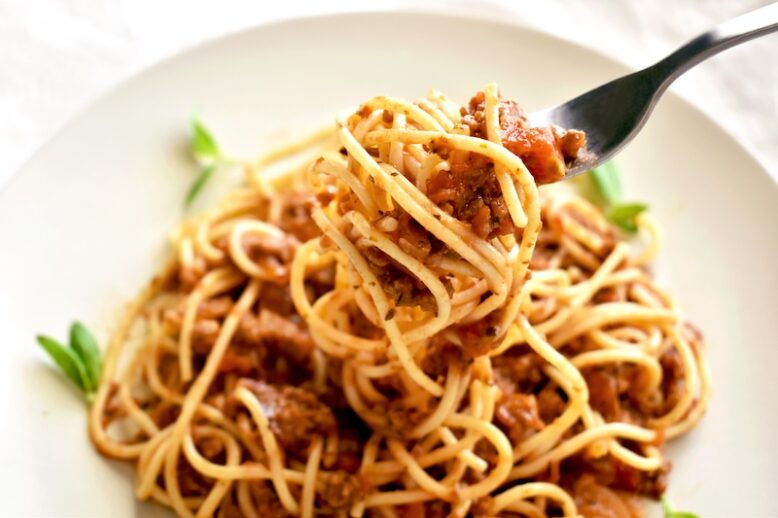
Fettuccine
When we say this word in English, we tend to pronounce the u as if it were an ah sound, and once again, the word-final e becomes an ‘ee’ sound. What’s more, all the double consonants have been made single and the ‘tt‘ has become a ‘d‘ sound. That’s four pronunciation changes in one word – it’s a wonder Italians recognise it at all!
Listen to the correct pronunciation of fettuccine below:
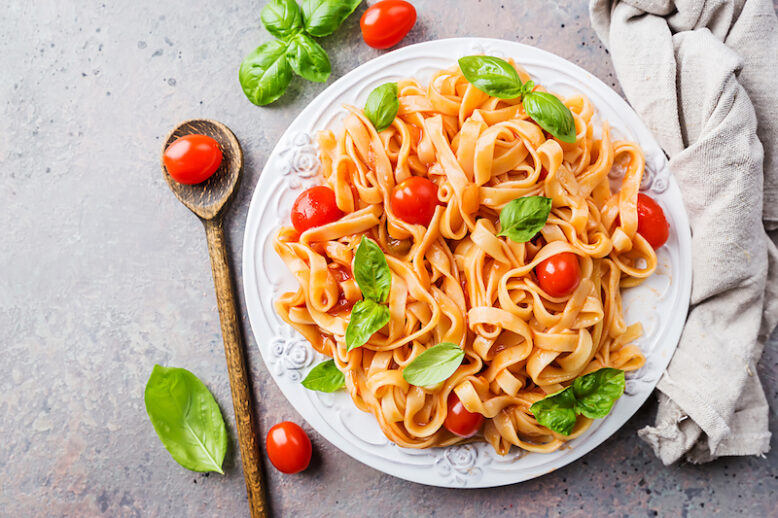
Tagliatelle
We English speakers tend to have a lot of trouble with the gli sound in Italian given that it doesn’t exist in our language. For this reason, the first part of the word tagliatelle is often mispronounced tag-li-ah.
Listen to the correct pronunciation of tagliatelle below:
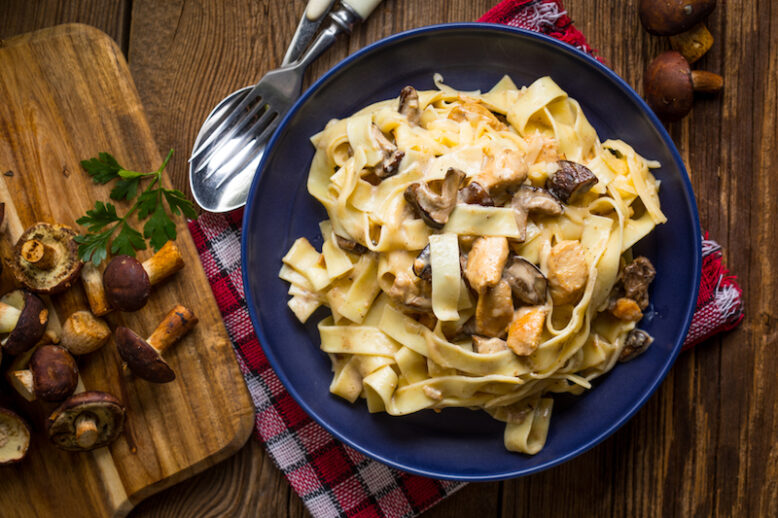
Can you think of any other words English speakers mispronounce in Italian? Let us know in the comment section below!
Heather Broster is a graduate with honours in linguistics from the University of Western Ontario. She is an aspiring polyglot, proficient in English and Italian, as well as Japanese, Welsh, and French to varying degrees of fluency. Originally from Toronto, Heather has resided in various countries, notably Italy for a period of six years. Her primary focus lies in the fields of language acquisition, education, and bilingual instruction.


